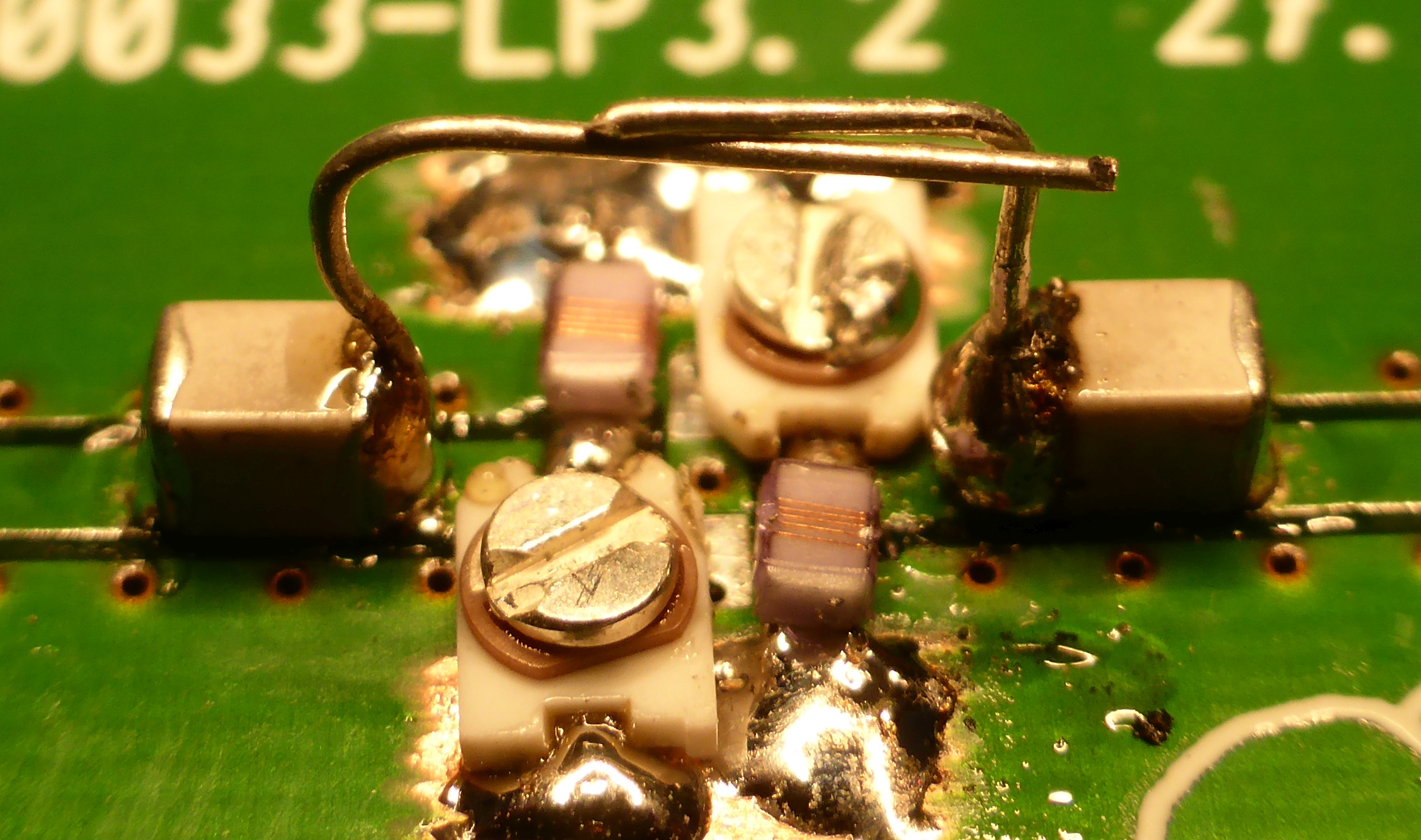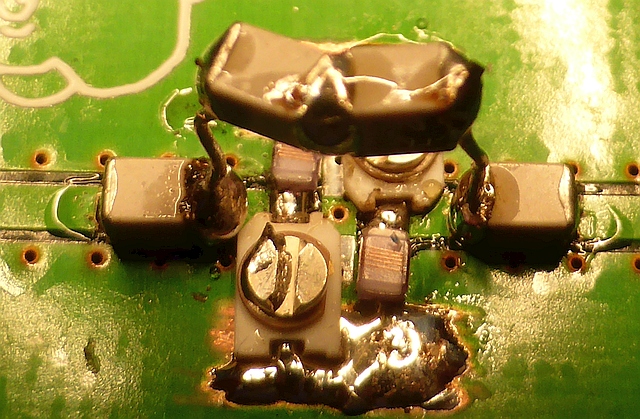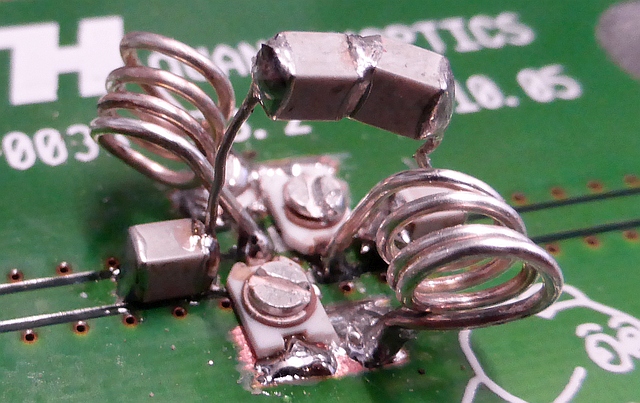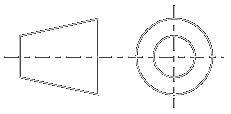
Categories
Statistics
Since 08.08.2014
Counts only, if "DNT = disabled".
Your IP is 3.147.66.178
ec2-3-147-66-178.us-east-2.c
Counts only, if "DNT = disabled".
Your IP is 3.147.66.178
ec2-3-147-66-178.us-east-2.c
Info
เราจะทำแบบวิศวกรผู้ยิ่งใหญ่

29. April 2024
Your valuable opinion :
Direct-Coupled-Resonator-Bandpass.php 17144 Bytes 04-12-2020 06:32:32
Direct Coupled Resonator Bandpass Filter Designer
A fully experimental thing

Inspired by the paper "Direct-Coupled Resonator Filters" by Seymour B. Cohn, June 1956.
If you want to build a filter like this one, we highly recommend, that you simulate the amplitude response first !
Due to the capacitive coupling, the attenuation above the passband is rather poor if you choose the bandwidth too large.
We suggest to start with a bandwidth not larger than 10 %.
If you want to build a filter like this one, we highly recommend, that you simulate the amplitude response first ! Due to the capacitive coupling, the attenuation above the passband is rather poor if you choose the bandwidth too large. We suggest to start with a bandwidth not larger than 10 %.
Example from practice
For an Receiver, we want to design an IF Bandpass with the following key data : Center Frequency F = 270 MHz, Bandwidth B = 10 MHz,
Ripple R = 0 dB (Butterworth), System Impedance R = 50 Ω, 2 resonators, allow the Calculator to choose inductors from E12 range.
As we want to use standard values (capacitors and inductors), we do play a little a sophisticated guess and choose L = 27 nH.
(Switch to "use my value").
The Designer finally suggests the following values :
Direct Coupled Resonator Bandpass Filter Designer
https://www.changpuak.ch/electronics/Direct-Coupled-Resonator-Bandpass.php
Javascript Version : 27. Jan 2014
-----------------------------------------------------------------------------
Design Data for a 2-Resonator Bandpass Filter.
Center Frequency : 270.0 MHz
Bandwidth : 12.0 MHz
Passband Ripple : 0 dB (Butterworth Characteristic)
System Impedance : 50 Ohm
-----------------------------------------------------------------------------
Coupling Capacitor : 2.22 pF
Resonator #1 C : 10.32 pF // L : 27.00 nH
Coupling Capacitor : 0.40 pF
Resonator #2 C : 10.32 pF // L : 27.00 nH
Coupling Capacitor : 2.22 pF
-----------------------------------------------------------------------------
Please verify by simulation that attenuation above passband is sufficient.
Negative capacitances indicate an unhappy inductance.
The insertion loss of the board was not calibrated out to get nicer measurements. The idea was to show, that the calculator delivers useful values :-)
And yes, the bandwidth is larger. This is due to the (slightly) different coupling-capacitor. We therefore introduced the bandwidth-tuning-buttons to adjust for a minimum value of e.g. 1 pF.
The larger bandwidth was also caused by an error in the javascript. We would like to thank Gregory for his valuable feedback on this. MUITO OBRIGADO !!!
Direct Coupled Resonator Bandpass Filter Designer
https://www.changpuak.ch/electronics/Direct-Coupled-Resonator-Bandpass.php
Javascript Version : 27. Jan 2014
-----------------------------------------------------------------------------
Design Data for a 2-Resonator Bandpass Filter.
Center Frequency : 270.0 MHz
Bandwidth : 12.0 MHz
Passband Ripple : 0 dB (Butterworth Characteristic)
System Impedance : 50 Ohm
-----------------------------------------------------------------------------
Coupling Capacitor : 2.22 pF
Resonator #1 C : 10.32 pF // L : 27.00 nH
Coupling Capacitor : 0.40 pF
Resonator #2 C : 10.32 pF // L : 27.00 nH
Coupling Capacitor : 2.22 pF
-----------------------------------------------------------------------------
Please verify by simulation that attenuation above passband is sufficient.
Negative capacitances indicate an unhappy inductance.
Approach 1 |

|
Approach 2 |
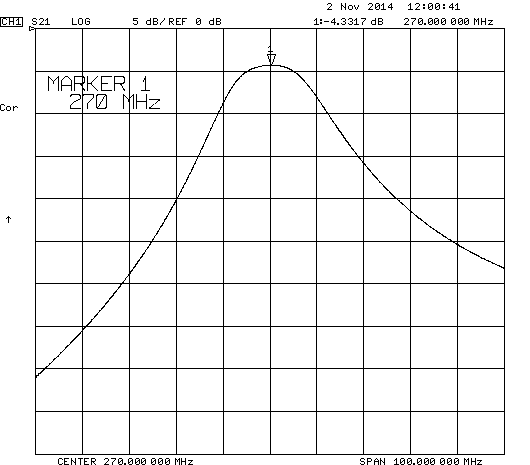
|
Approach 3 |
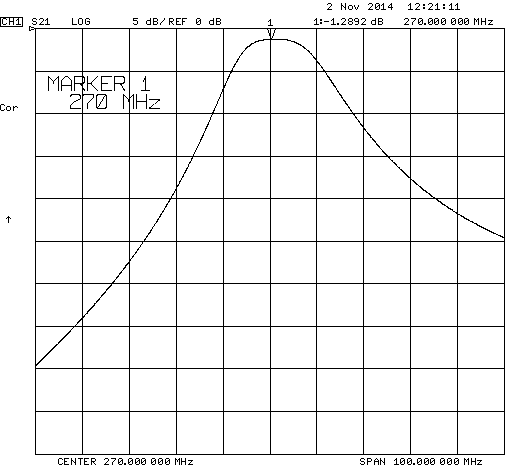
|
The insertion loss of the board was not calibrated out to get nicer measurements. The idea was to show, that the calculator delivers useful values :-)
And yes, the bandwidth is larger. This is due to the (slightly) different coupling-capacitor. We therefore introduced the bandwidth-tuning-buttons to adjust for a minimum value of e.g. 1 pF.
The larger bandwidth was also caused by an error in the javascript. We would like to thank Gregory for his valuable feedback on this. MUITO OBRIGADO !!!
✈ Share your thoughts
The webmaster does not read these comments regularely. Urgent questions should be send via email.
Ads or links to completely uncorrelated things will be removed.
Your Browser says that you allow tracking. Mayst we suggest that you check that DNT thing ?
 ช้างเผือก
ช้างเผือก
